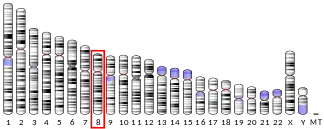| KCTD9 | |||||||||||||||||||||||||||||||||||||||||||||||||||
|---|---|---|---|---|---|---|---|---|---|---|---|---|---|---|---|---|---|---|---|---|---|---|---|---|---|---|---|---|---|---|---|---|---|---|---|---|---|---|---|---|---|---|---|---|---|---|---|---|---|---|---|
| |||||||||||||||||||||||||||||||||||||||||||||||||||
| Identifiers | |||||||||||||||||||||||||||||||||||||||||||||||||||
| Aliases | KCTD9, BTBD27, potassium channel tetramerization domain containing 9 | ||||||||||||||||||||||||||||||||||||||||||||||||||
| External IDs | OMIM: 617265 MGI: 2145579 HomoloGene: 9754 GeneCards: KCTD9 | ||||||||||||||||||||||||||||||||||||||||||||||||||
| |||||||||||||||||||||||||||||||||||||||||||||||||||
| |||||||||||||||||||||||||||||||||||||||||||||||||||
| |||||||||||||||||||||||||||||||||||||||||||||||||||
| |||||||||||||||||||||||||||||||||||||||||||||||||||
| |||||||||||||||||||||||||||||||||||||||||||||||||||
| Wikidata | |||||||||||||||||||||||||||||||||||||||||||||||||||
| |||||||||||||||||||||||||||||||||||||||||||||||||||
Potassium channel tetramerization domain containing 9 is a protein that in humans is encoded by the KCTD9 gene. [5]
References
- 1 2 3 GRCh38: Ensembl release 89: ENSG00000104756 - Ensembl, May 2017
- 1 2 3 GRCm38: Ensembl release 89: ENSMUSG00000034327 - Ensembl, May 2017
- ↑ "Human PubMed Reference:". National Center for Biotechnology Information, U.S. National Library of Medicine.
- ↑ "Mouse PubMed Reference:". National Center for Biotechnology Information, U.S. National Library of Medicine.
- ↑ "Entrez Gene: Potassium channel tetramerization domain containing 9". Retrieved 2018-04-02.
Further reading
- Zhou YY, Pi B, Liu XJ, Zhang R, Deng GH, Chen T, Wang HW, Han MF, Yan WM, Xi D, Huang JQ, Wang YM, Luo XP, Ning Q (November 2008). "[Increased expression of KCTD9, a novel potassium channel related gene, correlates with disease severity in patients with viral hepatitis B]". Zhonghua Gan Zang Bing Za Zhi (in Chinese). 16 (11): 835–9. PMID 19032868.
- Chen T, Zhu L, Zhou Y, Pi B, Liu X, Deng G, Zhang R, Wang Y, Wu Z, Han M, Luo X, Ning Q (March 2013). "KCTD9 contributes to liver injury through NK cell activation during hepatitis B virus-induced acute-on-chronic liver failure". Clin. Immunol. 146 (3): 207–16. doi:10.1016/j.clim.2012.12.013. PMID 23376586.
External links
- PDBe-KB provides an overview of all the structure information available in the PDB for Human BTB/POZ domain-containing protein KCTD9
This article is issued from Wikipedia. The text is licensed under Creative Commons - Attribution - Sharealike. Additional terms may apply for the media files.



